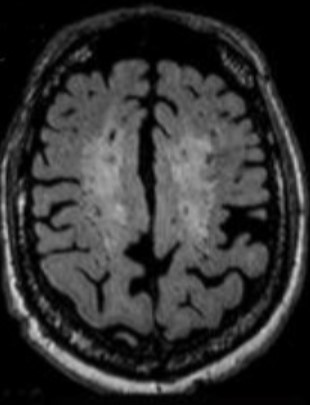Binswanger’s disease, also called subcortical vascular dementia, is a type of dementia caused by microscopic damage to the deep layers of white matter in the brain.
The damage is the result of thickening and narrowing (atherosclerosis) of the arteries that supply the subcortical areas of the brain.
Atherosclerosis usually begins in the late 40s and increases in severity with age. As the arteries become narrower and narrower, the blood supplied by these arteries decreases and the brain tissue dies.
A characteristic pattern of damaged brain tissue in Binswanger’s disease can be seen with modern brain imaging techniques such as computed tomography or magnetic resonance imaging (MRI).

Cerebral small vessel disease include Binswanger’s disease,
Cerebral small vessel disease (CSVD) refers to a constellation of various disorders relating to the vascular network in the brain, particularly concerning narrow capillaries, arterioles and venules. The advanced age of this vascular web as well as oxidation processes contribute to its degeneration and pathology. This medical condition can involve Binswanger’s Disease, leukoaraiosis, cerebral microbleeds (CMBs) or lacunar strokes; all representing particular forms at the different classifications of CSVD.
Symptoms
The most characteristic feature of Binswanger’s disease is psychomotor slowness – an increase in the time it takes, for example, for the fingers to transcribe thought from letter to letter on a piece of paper.
Other symptoms include forgetfulness (but not as severe as memory loss in Alzheimer’s disease), speech changes, unsteady gait, frequent falls, personality or mood changes (very probably in the form of apathy, irritability and depression), and urinary symptoms that are not caused by urological disease.
Brain imaging, which reveals the characteristic brain lesions of Binswanger disease, is essential for a positive diagnosis.
Treatment of Binswanger’s disease
There is no specific treatment. People with depression or anxiety may need antidepressant medication. Atypical antipsychotic drugs may be helpful in individuals with agitation and disruptive behavior.
Recent clinical trials with the drug memantine have shown improved cognition and stabilization of functioning and overall behavior.
Successful management of hypertension and diabetes can slow the progression of atherosclerosis, and subsequently slow the progression of Binswanger’s disease. Because there is no cure, the best treatment is preventive, controlling risk factors such as high blood pressure, diabetes, and smoking.
Binswanger’s disease is a progressive disease; there is no remedy. Changes can be sudden or gradual, then progress in stages. It can often coexist with Alzheimer’s disease. Behaviors that slow the progression of high blood pressure, diabetes, and atherosclerosis — such as eating healthy and maintaining healthy sleep/wake schedules, exercising, and not smoking or drinking too much alcohol — can also slow the progression of the disease.
